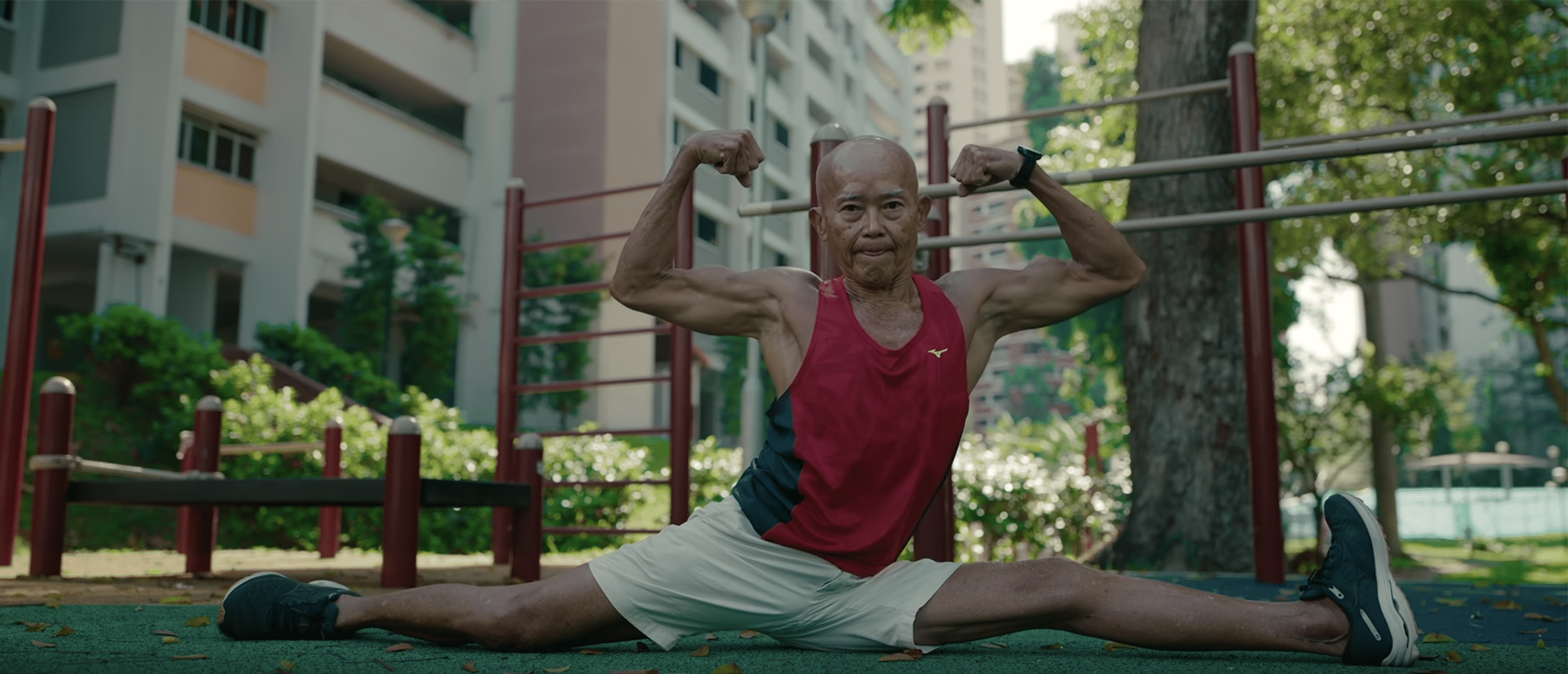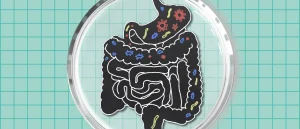‘Secrets of the Blue Zones’ on Netflix Wants to Help You Live to 100
Of all the conversations to bring to the dinner table, the exploration of death and dying probably isn’t top of everyone’s list. Maybe it’s the Minnesotan in him, but Dan Buettner, longevity obsessive and author of The Blue Zones Secrets for Living Longer, is likely the exception. Buettner’s Blue Zones Project identifies places in the world where people are uncommonly long-lived and now, it’s a four-part docuseries on Netflix titled Live to 100: Secrets of the Blue Zones.
Episodes range from 30 to 45 minutes, and each dives into one or two of the six Blue Zones around the globe— the Italian mountain villages of Sardinia, Japan’s famous Okinawan people, the family- and wine-oriented Greek Ikarians, the farmers of Costa Rica’s Nicoya region, the tight-knit Seventh Day Adventists in Loma Linda, and the surprising rise of centenarians in Singapore. Despite being separated by thousands of miles and possessing dramatically different cultures, the formula for living beyond 100 years old, Buettner says, is consistent. Here’s everything you need to know about Netflix’s Blue Zones show.
Who Is Dan Buettner?
Born in Minnesota, Dan Buettner is a National Geographic Fellow and Explorer, New York Times bestselling author, Emmy Award-winning journalist and producer, and owner of a number of Guiness World Records. What he’s best known for, though, is his work around Blue Zones.
While reporting on a story about the places in the world where people live the longest for National Geographic in 2003, Buettner found that there were a handful of localities in which living beyond 100 years old wasn’t just more common, it was the norm.
What’s more, these places—which are nowhere near each other on a map—share similarities with one another in the form of diet, community, and physical activity. After reporting his early findings in a 2005 issue of Nat Geo, Buettner published a book which acted as a deeper dive into the subject of long-lived communities, which he followed up with another book on happiness in the Blue Zones and later a cookbook compiled with recipes from the Blue Zones themselves.
What Are Blue Zones?
Working with various anthropologists, demographers, dieticians, and historians to find them, Buettner’s Blue Zones are individual places where people live significantly longer than the rest of the world. Buettner began by expanding on the work of demographers in The Journal of Experimental Gerontology. The Blue Zones aren’t bound by a single diet, faith, or lifestyle, but, according to Buettner, they have more in common than not.
“They’re living vibrant, active, happy lives, and perhaps the biggest takeaway is that they’re living longer without trying [to],” Buettner says in the first episode of the new docuseries, titled “The Journey Begins.”
There are a few more specific definitions of what a Blue Zone is—including one used by Michel Poulain, Anne Herm and Gianni Pes, the original demographers who coined the term—but Buettner’s definition is relatively straightforward. Per the Blue Zones official website, a Blue Zone should “show a statistically significant higher longevity compared to national levels and display various features related to their lifestyle, nutrition, genetics and both human and physical environmental conditions that might be considered as determinants for living longer and better.”

What Makes the Blue Zones Special?
Known as the Power 9, there are nine evidence-based common denominators that unite life in Blue Zones.
- Move naturally: According to Blue Zones lore, the people who live longest don’t abide by strict fitness schedules or engage with intense athletic activity much at all. Instead, their lives require them to move around naturally—like having to walk to a market for produce, or step outside and tend to a garden in the afternoon.
- Purpose: Blue Zones research suggests that purpose—known as ikigai in the Okinawan Blue Zone or plana de vida in the Nicoyan one—can add up to seven years of life expectancy.
- Downshift: While their methods for achieving this “downshift” are very different, all Blue Zones natives know how to destress when needed. Consistent stress can lead to chronic inflammation, which is connected to all age-related diseases.
- 80 percent rule: Blue Zones natives eat plenty, but they stop before they’re uncomfortably full. Okinawan Blue Zone natives live by the 2,500-year-old Confucian mantra hara hachi bu which specifies eating until you’re 80 percent full.
- Plant slant: The people in the Blue Zones are not vegetarian, but meat seems like more of an infrequent side dish than the star of every meal. Instead, it’s beans, lentils, fava, soybeans, and so on that make up the core of Blue Zones protein intake. According to Buettner, meat protein (which is mostly pork in the Blue Zones) is eaten about five times a month.
- Wine at 5: This may come as a surprise, but all Blue Zones residents, bar the Seventh Day Adventists in Loma Linda, California, drink alcohol regularly, albeit in moderation—usually just one or two small glasses of wine daily. Buettner says it’s best to do this with the company of family or friends (more on that later).
- Belong: According to Buettner’s research, only one out of nearly 300 centenarians interviews in the Blue Zones did not belong to a faith-based community. There isn’t a specific denomination or religion that connects the Blue Zones, but the presence of faith-based groups is common throughout.
- Loved ones first: Another common thread throughout the Blue Zones is a commitment to family—children housing and caring for elderly parents within their own homes, families helping young couples with child rearing, and so on. Time spent with a life partner as well as children also plays an important role.
- Right tribe: This basically means finding community and friendship that supports a healthy lifestyle. Because so much of our own health is dictated by our environment, it stands to reason that, should your friend group enjoy hiking and cooking healthy food for one another, you probably will too.
Where Are the Blue Zones?
Okinawa, Japan
Probably the most famous Blue Zone in the world, Okinawans blend healthy diets with strong, lifelong social circles called moais to live comfortably for decades longer than the rest of the world. Specifically, Okinawa is home to the highest life expectancy for women.
Nicoya, Costa Rica
Located on a large peninsula south of Nicaragua with dozens of beaches and surf spots within driving distance, this Central American Blue Zone is as great to live in as it is to visit. Costa Rica offers exceptional healthcare to citizens, but those in the village of Nicoya double down by eating whole-food, unprocessed diets consisting of yams, beans, rice, papaya, squash, and corn.
Ikaria, Greece
Situated between Greece and Turkey in the Aegean Sea, Ikaria is a small island that’s been settled for at least 10,000 years now. Features of life in Ikaria, beyond the obviously gorgeous views at every turn, include red wine (in moderation), clean air, frequent walking, and an unprocessed diet.
Singapore
Unlike the rest of the Blue Zones, the newest addition to Buettner’s collection is a massive city. Singapore, the city-state island off the southern tip of Malaysia, prioritizes public transportation, pedestrianism, healthcare, and fresh food through heavy subsidization. The key difference between Singapore and the other Blue Zones is an important one: it was designed for long, healthy living—it wasn’t born that way out of centuries (or millenia) of cultural norms.
Sardinia, Italy
Sardinia was the first officially identified Blue Zones region. Like other Blue Zones, the “secret” is largely obvious—Sardinians’ diets are garden fresh vegetables, nutritious beans, fruits, and whole-grain bread; plus, they still hunt and fish their own game and seafood as needed. Unlike other Blue Zones, though, due to geographic and cultural isolation, many Sardinians also carry a specific and rare genetic quirk called the M26 marker, which is linked to longevity.
Loma Linda, California
An hour drive east of Downtown Los Angeles, the one and only American Blue Zone is a small neighborhood on the south side of San Bernardino, California. This Blue Zone is a micro-community of Seventh-day Adventists who, unlike most other Blue Zones, totally abstain from alcohol, smoking, and eating meat.
“Live to 100: Secrets of the Blue Zones” is available for streaming now on Netflix.












